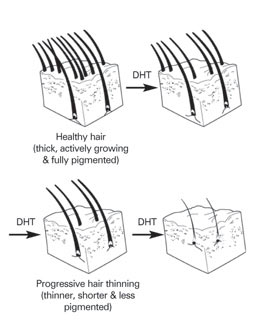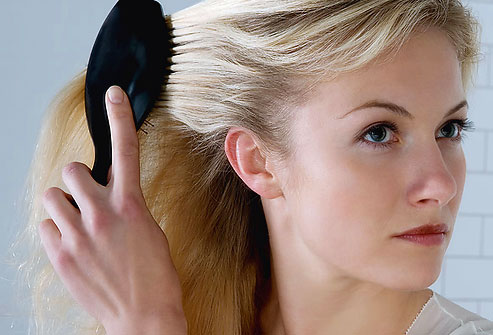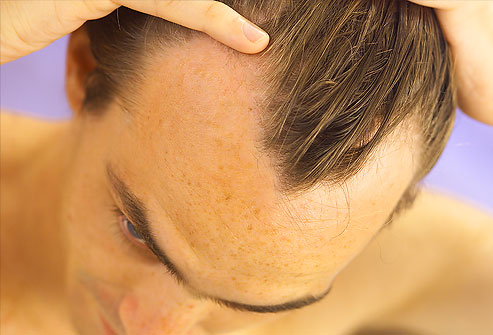13.10.2009
in HAIR LOSS FACTS
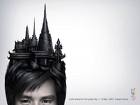
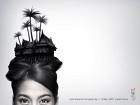


Split ends
Hair fracturing
Genetic hair shaft disorders
Monilethrix
Pseudo monilethrix
Twsited hair
Menkes kinky hair syndrome
Bamboo hair
Trichothiodystrophy
Ringed hair
Wooly hair syndrome
Uncombable hair syndrome
Trichonodosis
Pohl-pinkus constriction
Split Ends – Trichoptilosis
The most common of all hair shaft problems. Hair proteins are arranged in bundles called Macro-fibrils, due to general wear and tear these separate at the free end of the hair which becomes frayed giving rise to ‘split ends’.
If the hair is naturally dry or brittle or has been subjected to the action of hairdressing chemicals, particularly perming, straightening and colouring whether tint or bleach, the hair is far more likely to split.
Rough treatment of the hair, too much brushing particularly with hard brushes, combing with nylon and metal combs, the over enthusiastic use of heated rollers, brush rollers, curling tongs will also greatly encourage the hair to split. Unfortunately if left, the split ends break off leaving a new split higher up the hair shaft. Therefore, if you think that your hair never grows any longer it could be its because the hair is splitting and breaking off as fast as it grows.
There is no cure for split ends. These should be cut off using hairdressers very sharp scissors. Ordinary household scissors are not sharp enough and crush the hair causing further splitting. Once the split hairs are removed, it is vital to improve the condition of the hair by always using a special conditioner on the mid lengths and ends and ideally leaving a little in. Never use heat or heated rollers on dry hair. Treat the hair very gently. Human hair may be the strongest natural fibre in the world but even hair will wear out. Regular trimming and gentle treatment is the golden rule.
Hair Fracturing
Although hair may split on the ends, it frequently also splits and fractures higher up rather like splitting a dry twig. Although this may be common among some of the rarer hair shaft problems listed below, it is virtually always caused by mechanical damage i.e. rough treatment, back combing, brushing or combing too violently, heated rollers and all of the causes of hair splitting. The fractured hair has no elasticity at all at the point of fracture. This breaks off to leave one end of the fracture as a split end. Fracturing and splitting usually go together and the cause and treatment are the same.
Genetic Hair Shaft Disorders
Regrettably some people are born with naturally weak hair due to inherited hair shaft disorders. Although incurable, very gentle treatment and the regular use of good conditioners and very mild shampoos will help. All hairdressing chemicals must be completely avoided as they are certain to be destructive.
Monilethrix
This varies widely in degree and in very mild cases may not be noticed.
The hair is beaded having nodes 1 millimetre apart with very thin internodes, the hair has no medulla and contains less alpha keratin which is normally essential in making the hair elastic. The inherited weakness is from a dominant gene and becomes visible soon after birth, particularly around the area from the crown to the nape of the neck. There is often a build up of dead skin around the neck of the hair follicle. The hair is very brittle and breaks very easily. It is important that diagnosis of this problem involves microscopic examination and measurement of the nodules. There is no cure and the hair must always be treated very gently.
Pseudo Monilethrix
Often caused by hairdressing damage, the nodes occur at varying distances so microscopical examination is vital to distinguish between the two problems. If due to hairdressing technique or chemicals, avoidance of these and the treatment of hair as for split ends is the solution to the problem.
Twisted Hair – Pili Torti
The hair is flattened in cross section and the hair rotates through 180° on its axis. The disorder is more common in females and is a dominant genetic disease.
Occasionally the hair will be normal unless a localised infection or inflammation of the scalp precipitates the problem. The hair is brittle, non-elastic and breaks off easily. It is possible that the problem may disappear at puberty or may only occur after that time. Problems with nail growth, corneal eye disorders and mental retardation may also be present. The hair commonly has a sparkling appearance due to the light reflecting off of it at different angles.
No treatment is effective except regular conditioning and very gentle care.
Menkes Kinky Hair Syndrome
Also called Trichopoliodystrophy is a recessive genetic trait affecting only about one person in every thirty thousand. The hair becomes frizzy and unmanageable, the arteries and brain may also be affected. It is believed to be due to the inability of the body to absorb copper from the intestine. Research is still being tested using copper either as injections or as a dietary additive.
Bamboo Hair – Nethertons Syndrome
Genetically recessive usually affects girls and is a fault in the local keratinisation or hardening of hair, sometimes connected with Ichthiosis which is the congenital absence of hair, sweat glands, elastic tissue or oil glands from a particular area. Under the microscope the brittle hairs look just like bamboo canes in shape.
Very gentle cosmetic care is needed. There is no cure.
Trichothiodystrophy
Brittle hair due to abnormally low levels of sulphur. If pulled the hair breaks cleanly, clean breakage is called Trichoschisis.
Ringed Hair – Tricho Leuco Annularis
The hair appears to shimmer due to light and dark rings of pigment along its length, may be genetically dominant or recessive. The hair has a low level of the amino acid cystine. The hair grows normally but is slightly fragile and needs to be treated gently. return to top of page
Wooly Hair Syndrome
Negroid type hair growth in patches affecting non-Negroes, genetically dominant factor. The hair becomes finer and lighter, also increasingly brittle. Not curable, treat the hair gently.
Uncombable Hair Syndome
Very rare silvery blond hair triangular in cross section. No cure or solution at present.
Trichonodosis
Knotting of hair usually affects Negroes, often associated with scratching or rubbing of scalp.
Pohl-Pinkus Constriction
Thinning of hair shaft diameter due to ill heath, surgery or debilitating illness. This also causes lateral lines on the fingernails called beau’s lines and is due to the disturbances in the synthesis of protein into keratin.
Do you have Hair Loss Problems, read our Hair Loss Help









